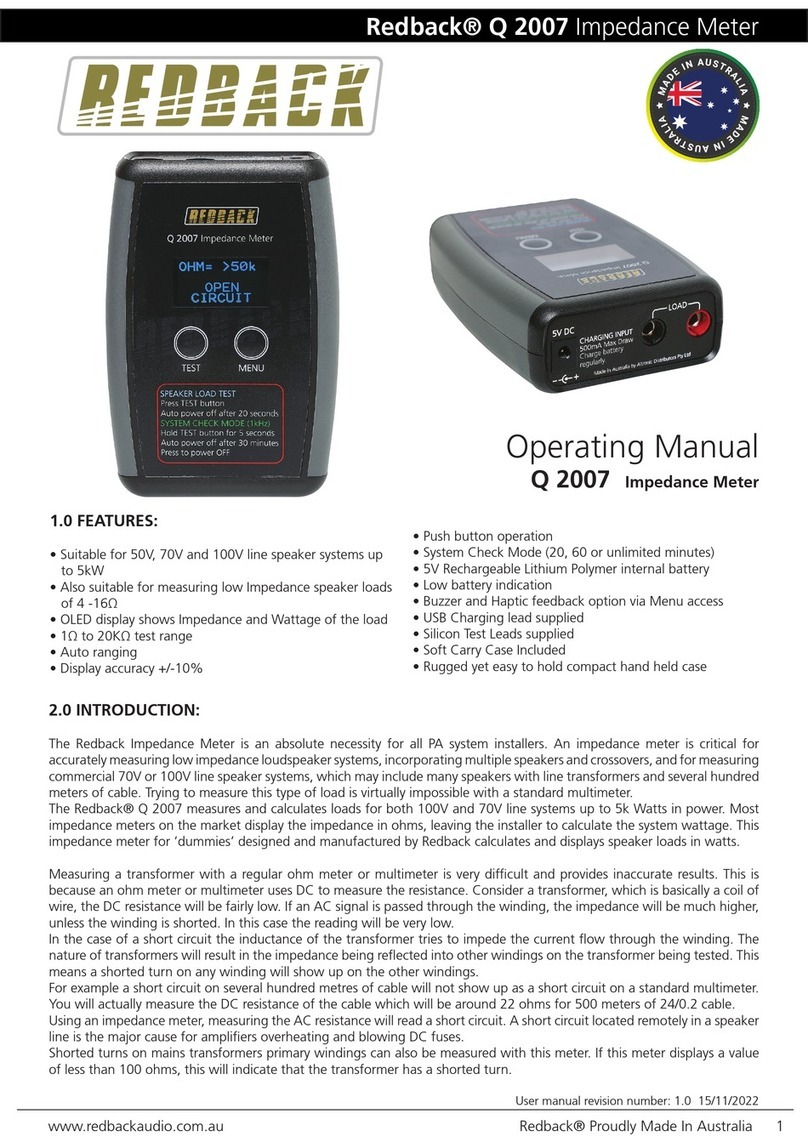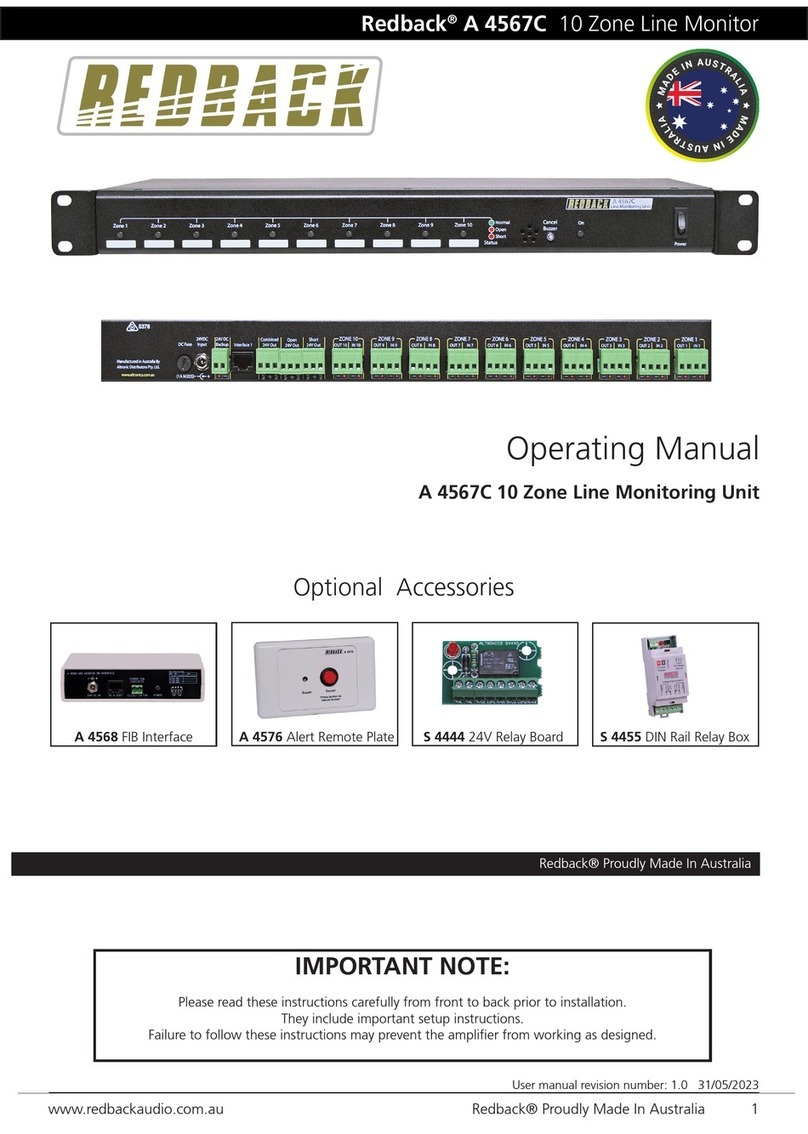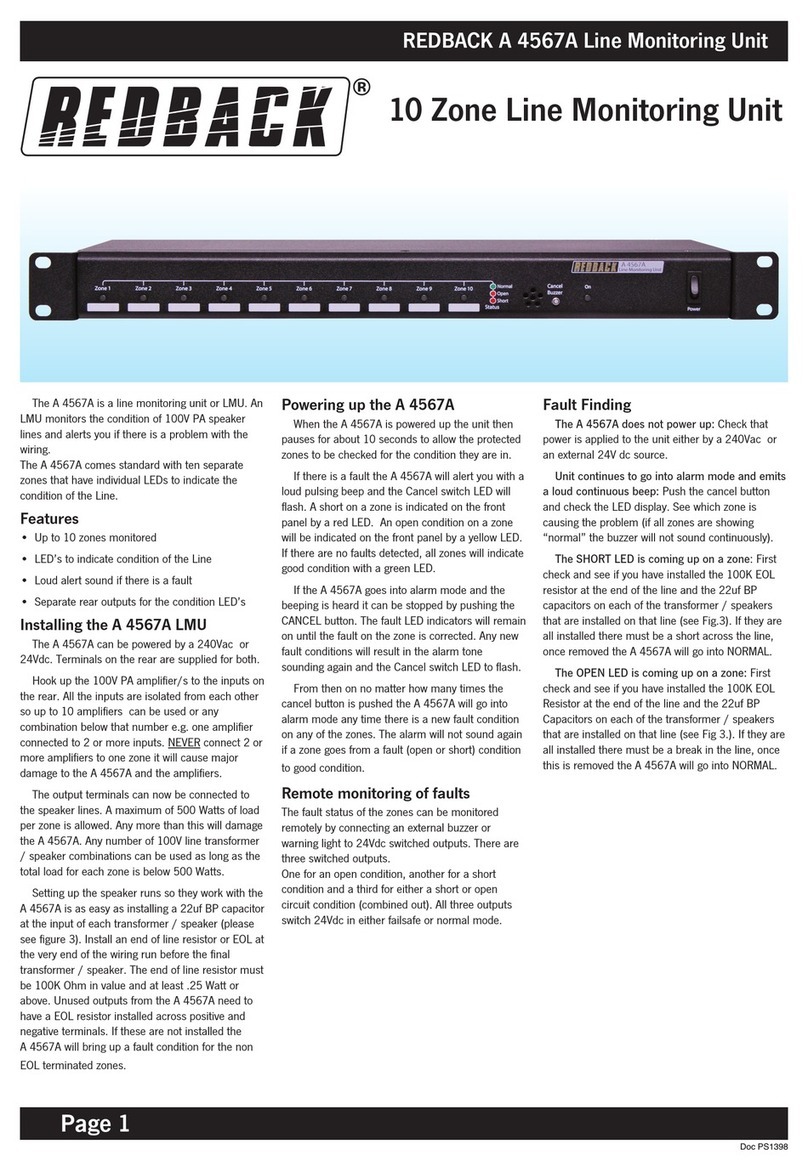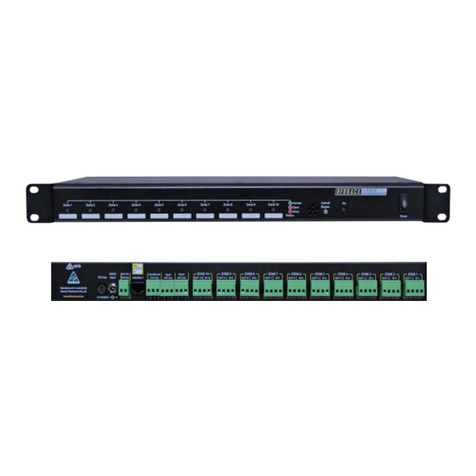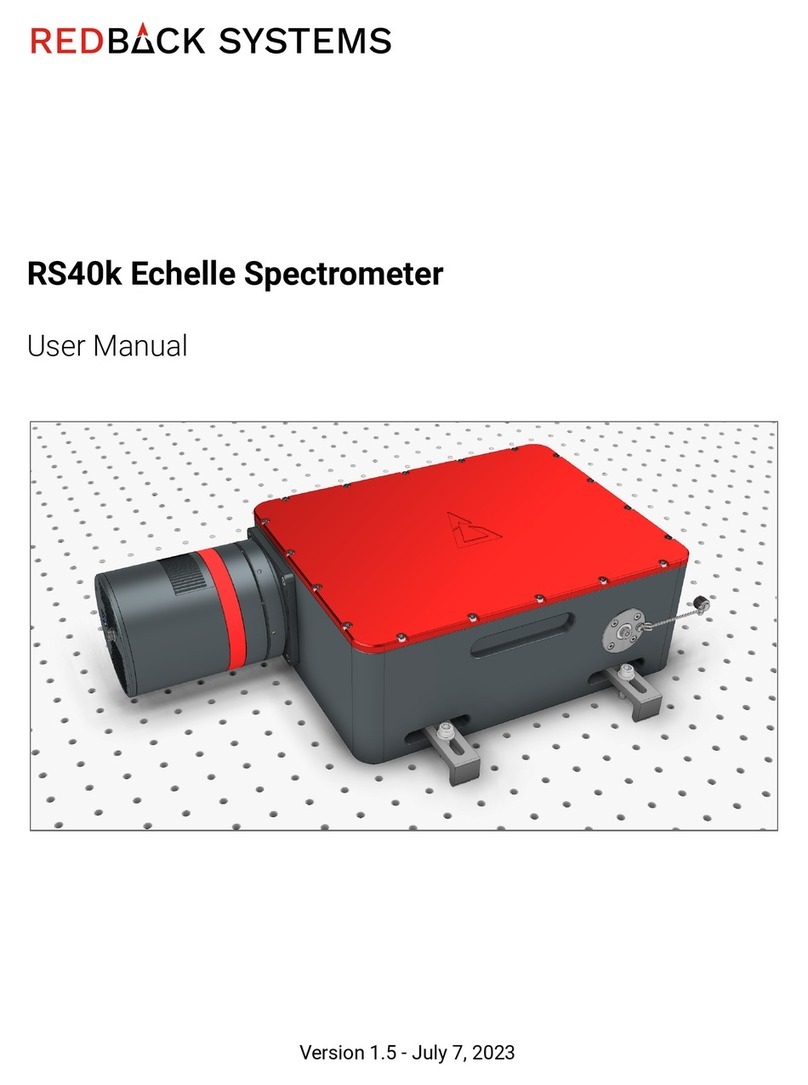
www.redbackaudio.com.auRedback® Proudly Made In Australia2
Redback® Q 2004 Impedance Meter
3.0 OPERATION:
MENU OPTIONS
Press the “MENU” button to access the menu, and then press the “MENU” button repeatedly to scroll through the options.
Press the “TEST” button to select the desired option.
There are four menu options available as outlined below.
BUZZER:
Use this option to enable a buzzer which sounds when the unit is testing. Press the “MENU” button repeatedly to scroll
through the OFF and ON options and then press the “TEST” button to select.
HAPTIC:
Use this option to enable haptic feedback which vibrates the unit when testing. Press the “MENU” button repeatedly to
scroll through the OFF and ON options and then press the “TEST” button to select.
VOLTS:
The Redback® Q 2004 impedance meter is suitable for 50V, 70V and 100V systems. Before measuring the impedance of a
line, the voltage needs to be set via the Menu button to suit the system application.
(Note: The voltage is set to 100V by default at the factory).
Press the “MENU” button repeatedly to scroll through the voltage options and then press the “TEST” button to select.
SYS TIME:
This option is used to set the amount of time required when in “System Check Mode”. Pess the “MENU” button repeatedly
to scroll through the time options, 20 minutes, 60 minutes and “None” and then press the “TEST” button to select the
desired time. When the time is set to “None” the unit will stay in “System Check Mode” until the “TEST” button is pressed
or the battery runs at.
TO MEASURE IMPEDANCE
Make sure the amplier has been completely disconnected from the speaker line to be measured.
Connect the test leads to the Q 2004.
Connect the test leads to the speaker line.
Once your meter is connected press the TEST button for approximately 1 second. The impedance meter will display “TESTING
PLEASE WAIT” for approximately 3 seconds while it checks the speaker load. You will be able to hear a tone from the speaker
load that is under test. After 3 seconds the load impedance and wattage will be displayed on the LCD.
Figure 1 below lists the expected speaker line Impedances and their associated wattages for 70V and 100V systems.
So for a total load of 500 watts using 100V line transformer fitted speakers the impedance of the speaker load should
be 20Ω. For a total load of 30W using 70V line transformer fitted speakers the impedance of the speaker load should be
156Ω and so on.
Fig 1. Measuring 70/100V Line Speaker Impedance
Wiring speakers in parallel for 70/100V line: Where several speakers are to
be used at one time, on one circuit, it becomes necessary to use speakers fitted
with line-matching transformers. This is to overcome the effects of connecting
speakers in parallel and cable losses. The amplifier generally has an output
voltage of 100 volts (70 volts is typically used in North America, however
operation is similar). In this configuration the total wattage load on the amplifier
is derived from adding all the line transformer primary tap ratings together. For
example, 70 one watt speakers will have a total speaker load of 70 watts. Or
alternatively, it is conceivable to connect 100 one watt speakers to a 100 watt,
100 volt line amplifier.
Measuring 70/100V Line Speaker Impedance: To measure amplifier system
load, you must use an impedance meter in order to measure the ac resistance
of the connected speaker network. Impedance cannot be measured with a
standard multimeter, as this measures the dc resistance.
About 70V & 100V Line Speaker SystemsLoad 70V 100V
0.5W 9.4kΩ 20kΩ
0.66W 7.12kΩ 15kΩ
1W 4.7kΩ 10kΩ
1.25W 3.76kΩ 8kΩ
2W 2.35kΩ 5kΩ
2.5W 1.88kΩ 4kΩ
3W 1.56kΩ 3.3kΩ
5W 940Ω 2kΩ
7.5W 626Ω 1.3kΩ
10W 470Ω 1kΩ
15W 313Ω 666Ω
20W 235Ω 500Ω
30W 156Ω 333Ω
40W 117Ω 250Ω
60W 78Ω 166Ω
100W 47Ω 100Ω
125W 37Ω 80Ω
250W 19Ω 40Ω
500W 9.4Ω 20Ω












